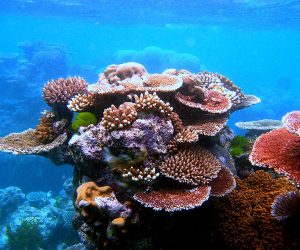
Off the southeast coast of mainland Asia lies a marine region in the Indo-Pacific known as the Coral Triangle. It is aptly named because of its rough triangular shape.
The Coral Triangle includes six nations consisting of the Philippines, Indonesia, Malaysia, Papua New Guinea, the Solomon Islands and Timor-Leste. It is considered to be the most diverse marine region on the planet.
Growing up in Canada, most kids interested in the marine world learned about the famous Great Barrier Reef in Australia. This led us to believe that it was also the most diverse place in the world for overall marine life. It wasn’t until I reached university that I learned otherwise and discovered the wonders of the Coral Triangle.
The centre for coral and reef fish diversity
It was during the 1990s that scientists began to recognise a pattern. They established that the Coral Triangle (and not the Great Barrier Reef) was the centre for coral and reef fish diversity.

To give an idea of the level of coral diversity within this region … the area is roughly 5.5 x 106 km2. This represents only 1.6% of our ocean, yet it contains 76% of all zooxanthellate coral species!
Zooxanthellate coral species are most of the reef-building corals that have photosynthetic algae (zooxanthellae) living in their tissues. Most of these species are the ones responsible for creating the amazing coral reefs we see all around the planet.
Also, the estimated total number of coral species is greater than 600. With that kind of diversity of coral, the reef systems are able to support a higher number of reef fish species. This is due to all the different little habitats created (habitats which us “science geeks” call ecological niches). The World Wildlife Foundation (WWF) says that the Coral Triangle contains over 2,000 coral reef fish species; that number represents 37% of the world total!
A priority for conservation
This kind of marine biodiversity has led to the Coral Triangle becoming a major priority for conservation.
One of Orca Scuba’s main dive centres is in the Coral Triangle: Pulau Rawa island in Malaysia. We are trying our best to help and promote conservation of one of the most beautiful regions that we have left.
If you would like to learn more or contribute I would encourage you to visit the Coral Triangle Center website http://www.coraltrianglecenter.org/

To meet some of these special critters, get in touch with us to arrange your diving trip to Rawa.
Orca Scuba: Check out our website www.orcascuba.com and feel free to contact Orca Scuba for dive courses and packages at [email protected]



Leave a reply